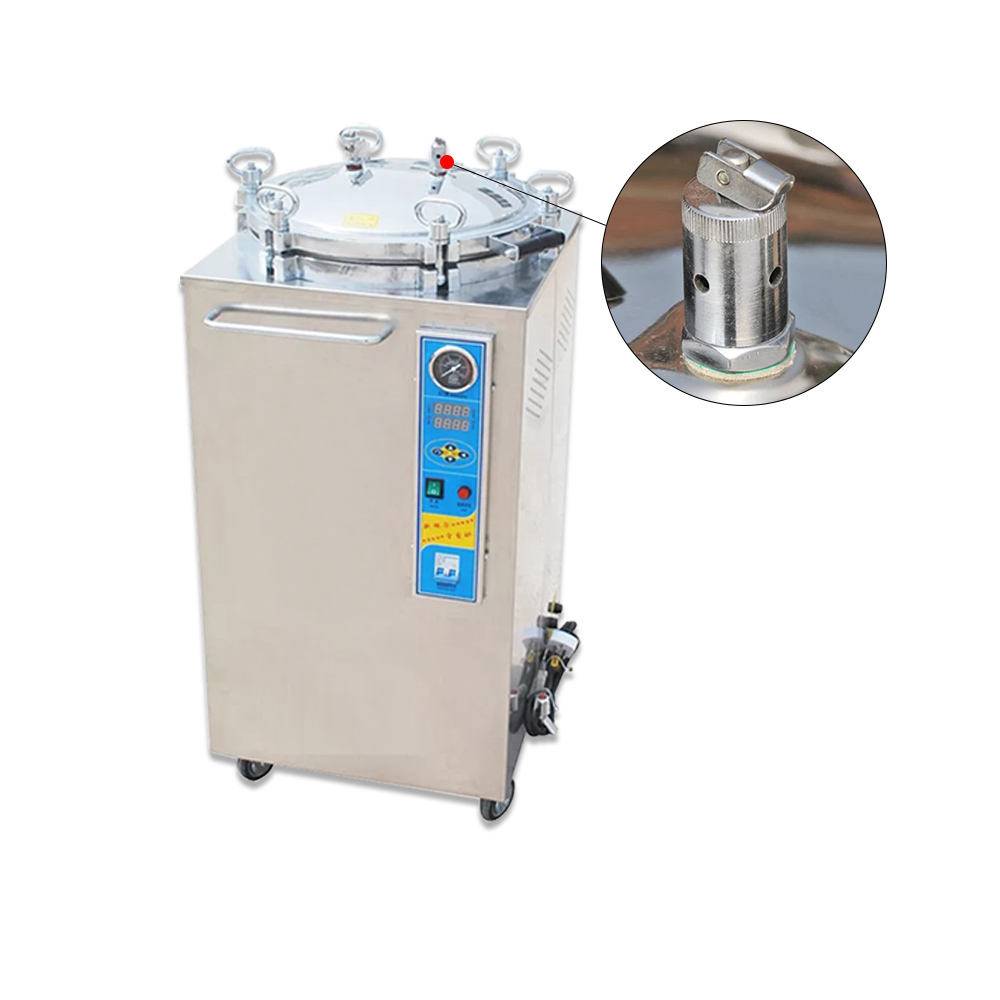Dirección
304 North Cardinal St.
Dorchester Center, MA 02124
Horas laborales
Lunes a viernes: 7:00 a. M. - 7:00 p. M.
Fin de semana: 10 a. M. - 5 p. M.
Dirección
304 North Cardinal St.
Dorchester Center, MA 02124
Horas laborales
Lunes a viernes: 7:00 a. M. - 7:00 p. M.
Fin de semana: 10 a. M. - 5 p. M.

In the fast-paced and highly regulated environment of hospitals, maintaining stringent standards of cleanliness and infection control is paramount to safeguarding patient health and well-being. At the core of these efforts lies the crucial role of sterilization equipment for hospitals.

In the fast-paced and highly regulated environment of hospitals, maintaining stringent standards of cleanliness and infection control is paramount to safeguarding patient health and well-being. At the core of these efforts lies the crucial role of sterilization equipment for hospitals. This comprehensive guide will explore various types of sterilization equipment commonly used in hospitals, their mechanisms of action, best practices for usage, and the importance of proper maintenance.
Sterilization equipment comes in various forms, each employing different methods to achieve sterilization. Here are some common types:
Autoclaves: Utilize steam under pressure to kill microorganisms.
Ethylene Oxide (ETO) Sterilizers: Use ethylene oxide gas to sterilize heat-sensitive materials.
Ultraviolet (UV) Sterilization Cabinets: Employ UV light to kill bacteria and viruses on surfaces.
Dry Heat Sterilizers: Utilize high temperatures to sterilize instruments and equipment.
Each type of sterilization equipment operates using distinct mechanisms to achieve sterilization. Understanding these mechanisms is crucial for ensuring effective sterilization:
| Método de esterilización | Mechanism of Action |
|---|---|
| Autoclaves | Steam penetrates and kills microorganisms through heat and moisture. |
| Ethylene Oxide (EtO) | Gas penetrates materials and disrupts microbial DNA. |
| UV Sterilization | UV light damages microbial DNA, rendering them unable to reproduce. |
| Dry Heat | High temperatures denature proteins and destroy microorganisms. |
Before sterilization, instruments must be properly cleaned and prepared to ensure effective sterilization:
Decontamination: Remove all visible debris and organic matter from instruments.
embalaje: Place instruments in sterilization pouches or wraps designed for specific sterilization methods.
Cargando: Arrange instruments in autoclave trays or sterilization chambers according to manufacturer guidelines.
Proper operation of sterilization equipment is essential for achieving sterilization efficacy:
Setting Parameters: Select appropriate sterilization parameters, including temperature, pressure, and cycle time.
Supervisión: Regularly monitor sterilization cycles to ensure they meet predetermined parameters.
Ventilación: Allow adequate ventilation after sterilization to dissipate residual gases or moisture.

Routine maintenance of sterilization equipment is critical for ensuring optimal performance and longevity:
Limpieza: Regularly clean and disinfect sterilization chambers and components to prevent buildup of contaminants.
Calibración: Calibrate equipment regularly to ensure accuracy of temperature, pressure, and cycle parameters.
Validation Testing: Perform routine validation testing to verify sterilization efficacy.
Implementing quality assurance measures is essential for maintaining compliance with regulatory standards and ensuring patient safety:
Documentación: Maintain detailed records of sterilization cycles, including parameters, dates, and outcomes.
Audits and Inspections: Conduct periodic audits and inspections to identify and address potential issues.
Staff Training: Provide comprehensive training to staff members responsible for operating and maintaining sterilization equipment.
Equipo de esterilización plays a vital role in maintaining a safe and sterile environment in hospitals. Understanding the different types of sterilization equipment, their mechanisms of action, and best practices for usage and maintenance is essential for ensuring effective sterilization and protecting patient safety. By following the guidelines outlined in this comprehensive guide, hospitals can uphold the highest standards of infection control and provide optimal care to patients.
Sterilization refers to the complete elimination of all forms of microbial life, including bacteria, viruses, and fungi. Disinfection, on the other hand, refers to the reduction of microbial populations to a level deemed safe for public health.
Sterilization equipment should undergo validation testing on a regular basis, typically quarterly or semi-annually, to verify its efficacy and compliance with regulatory standards.
No, different instruments and equipment may require different sterilization methods depending on their material composition, size, and intended use. It is essential to select the appropriate sterilization method based on manufacturer guidelines and compatibility with the items being sterilized.
Common challenges include equipment malfunctions, inadequate cleaning and disinfection, improper calibration, and failure to adhere to recommended maintenance schedules. Regular preventive maintenance and quality assurance measures are essential for addressing these challenges and ensuring the reliability and efficacy of sterilization equipment.
Hospitals can ensure compliance by implementing comprehensive sterilization protocols based on industry standards and regulatory guidelines, providing ongoing staff training and education, conducting regular audits and inspections, and maintaining accurate documentation of sterilization processes and outcomes.